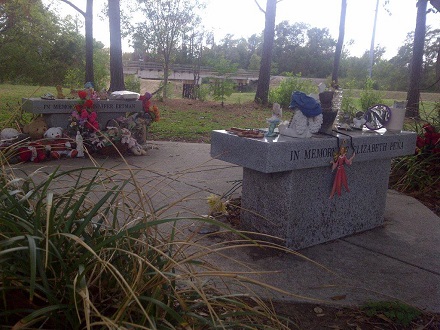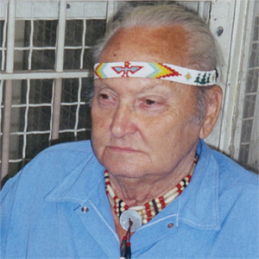On this date in 2006, James Malicoat was executed in Oklahoma for beating to death his 13-month-old daughter.
As a criminal case, the matter was open-and-shut. “Malicoat admitted hitting Leadford’s head on a dresser a few days before she died and punching her twice in the stomach the day she died, causing her to stop breathing,” the Oklahoma Attorney General’s statement noted. “Malicoat used CPR to revive her before lying down beside her to take a nap. When he awoke, Malicoat noticed Leadford was dead. He put her in her crib and covered her with a blanket before going back to sleep. When Leadford’s mother returned from work, the couple rushed the child to the emergency room, but staff there determined she had been dead for several hours.” The killer never attempted to deny what he had done; even at his clemency hearing, he didn’t request mercy.
While his case made its ponderous path through the judiciary, Malicoat came into the correspondence of a Benedictine monk from a nearby monastery.
“When I first saw the crime, I thought, ‘He needs a friend more than the others. Everyone is going to shrink back because the crime was so horrendous,'” said Brother Vianney-Marie Graham in this moving profile of the two men’s relationship, which spanned the last five years of Malicoat’s life.
In long letters and intermittent visits, Graham coaxed the already-penitent Malicoat towards a spiritual catharsis — often calling him “my little Pranzini” in reference to an inspiration for his mission, the condemned 19th century French murderer Henri Pranzini whose soul was famously won for God by the ministry of Saint Therese of Lisieux. By coincidence — or was it more? — Pranzini and Malicoat shared an August 31 execution date.
On this day..
- 1996: Rodolfo Soler Hernandez, burned on video - 2019
- 1816: Joaquim Camacho - 2018
- 1860: Samuel Brust - 2017
- 1767: Thomas Nicholson, hung in chains - 2016
- 1807: Jenkin Ratford, Chesapeake-Leopard affair casualty - 2015
- 1526: 2,000 Hungarian prisoners after the Battle of Mohacs - 2014
- 1876: Jesse Pomeroy's sentence commuted - 2013
- 1887: Henri Pranzini, repentant? - 2012
- 1900: William Black, nearly lynched - 2011
- 1923: Nathan Lee, the last public hanging in Texas - 2010
- 1852: Fatimih Baraghani, Tahirih the pure - 2009
- 1593: Pierre Barrière, undeterringly - 2008


 Qiu’s offense, at bottom, was one of anger management: believing the abbot at a mountain temple in the interior province of
Qiu’s offense, at bottom, was one of anger management: believing the abbot at a mountain temple in the interior province of  Sheikh Z(h)ana Abdel Karim Barzinji and his gang
Sheikh Z(h)ana Abdel Karim Barzinji and his gang  “
“


